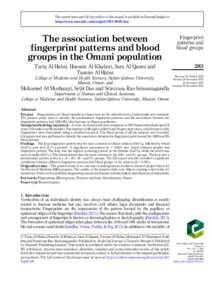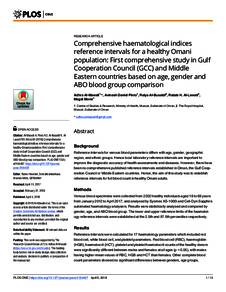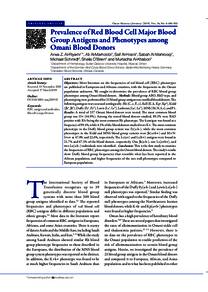Document
The association between fingerprint patterns and blood groups in the Omani population.
Identifier
DOI: 10.1108/AGJSR-10-2022-0223
Source
Arab Gulf Journal of Scientific Research. v. 41, 3, p. 283-292
Contributors
Country
England.
Publisher
Emerald Publishing.
Gregorian
2023-07-03
Language
English
Subject
English abstract
Purpose: Fingerprints and blood samples are important for the identification of individuals and criminals. The present study aims to identify the predominant fingerprint patterns and the association between the fingerprint patterns and ABO–Rh blood groups in Omani population. Design/methodology/approach: A cross-sectional study was conducted on 200 Omani individuals aged 18 years (104 males and 96 females). The imprints of all right and left-hand fingers were taken, and the types of the fingerprints were determined using a standard protocol. The blood group of all the subjects was recorded. Chi-square test was performed to identify the association between the fingerprint patterns and the ABO and Rh blood groups. Findings: The loop fingerprint pattern was the most common in Omani subjects (49.4%), followed by whorl (44.9%) and arch (5.7%) pattern. A significant association (p 0.001) was found between gender and fingerprint pattern. The loop was the highest occurring pattern in the females (54.6%), while the whorl was more in males (50.0%). The whorl pattern was the most common in the AB+ and O− groups. The loop was a predominant pattern in the A+, A−, B+, B− and O+ groups. The Chi-square test also revealed a significant correlation between different fingerprint patterns and blood groups of the subjects (p 0.001). Originality/value: The present study is an outcome of undergraduate student's research project thesis for the Doctor of Medicine (MD) program. The results of the present study may help in creating a data bank for biometrics, which can be useful for diagnosing associated diseases and also help in identification of individuals.
ISSN
1985-9899
Category
Journal articles



